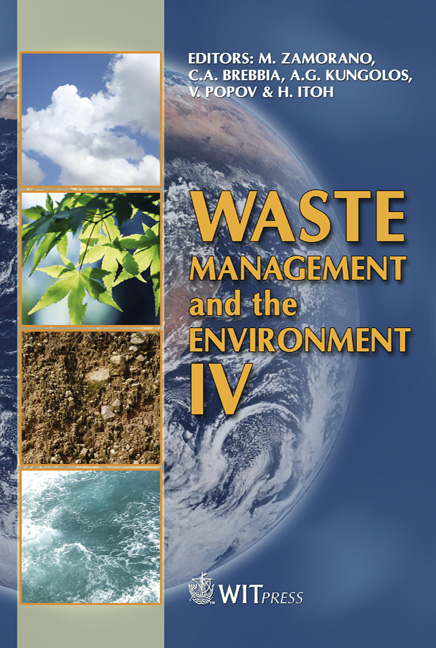The Reuse Of Waste From Road Resurfacing: Cold In-place Recycling Of Bituminous Pavement, An Environmentally Friendly Alternative To Conventional Pavement Rehabilitation Methods
Price
Free (open access)
Transaction
Volume
109
Pages
11
Page Range
459 - 469
Published
2008
Size
847 kb
Paper DOI
10.2495/WM080471
Copyright
WIT Press
Author(s)
M. J. Martínez-Echevarría, M. C. Rubio & A. Menendez
Abstract
The conservation and maintenance of highways is an increasingly important activity in developed countries. Since it generates great quantities of inert waste material, an alternative use for this waste must be found so that it does not end up in landfills. This paper examines the multiple benefits of cold in-place recycling (CIR) of bituminous pavement as compared to other more conventional pavement rehabilitation methods. It also analyzes the performance of CIR with a view to extending its use to more highway and vehicle traffic types. CIR permits the reuse of existing material. This process involves milling and crushing the existing asphalt pavement, rejuvenating the cement, and finally placing and compacting the material to a specified depth. Consequently, it reduces the production of conventional aggregate, and thus, the extraction of virgin aggregate from natural quarries. CIT is preferable to other techniques because it saves energy as well as reduces contamination from gas emissions. Key words: pavement rehabilitation, cold recycling, emulsion, environmental advantages, reuse. 1 Introduction In recent years in a world increasingly under attack from pollution, the conservation of natural resources has become a top priority in all production sectors. The construction industry is also faced with this challenge, and has pioneered the development of new techniques for the reuse of the waste material
Keywords
pavement rehabilitation, cold recycling, emulsion, environmental advantages, reuse.





